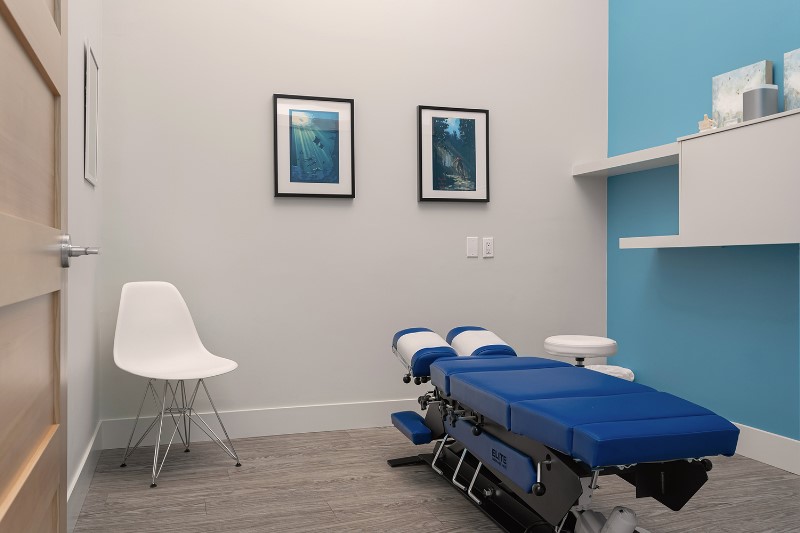In today's fast-paced world, maintaining a healthy lifestyle can sometimes feel like an uphill battle. Between work commitments, family obligations, and social activities, finding time for self-care is essential. One often-overlooked aspect of self-care is stretching. Not only does it improve flexibility and circulation, but it can also alleviate pain and discomfort resulting from poor posture or prolonged periods of inactivity. This article will delve into how to incorporate stretching into your routine with chiropractic advice, providing you with the tools and knowledge needed to enhance your overall wellbeing.
Understanding the Importance of Stretching
What is Stretching?
Stretching involves lengthening muscles to improve elasticity and promote muscle control. It can be categorized into two main types: dynamic stretching (performed before physical activity) and static stretching (held for a period after exercise).

Why Should You Stretch?
Stretching isn’t just about improving athletic performance; it’s crucial for everyone. Regular stretching can enhance flexibility, reduce risk of injury, relieve muscle tension, and improve posture.
Benefits of Stretching for Health
- Improved Flexibility: Increases range of motion in joints. Enhanced Performance: Better muscle function during physical activity. Pain Relief: Reduces discomfort caused by tight muscles. Stress Reduction: Promotes relaxation and mental clarity.
The Role of Chiropractic Care in Stretching
What is Chiropractic Care?
Chiropractic care focuses on diagnosing and treating musculoskeletal disorders primarily through manual adjustment techniques.
How Can Chiropractors Help with Stretching?
Chiropractors can offer personalized advice tailored to your body’s needs. They assess your posture, movement patterns, and any underlying issues that may affect your ability to stretch effectively.
Integrating Chiropractic Advice into Your Stretching Routine
Chiropractors often provide specific stretches designed to address individual imbalances or areas of tightness. Their expertise helps ensure you’re not only stretching correctly but are also targeting the right muscle groups.
Developing a Personalized Stretching Routine
Assess Your Needs
Before diving into any stretching regimen, assess your specific needs:
- What are your fitness goals? Do you have any injuries or chronic pain? Are there muscle groups that feel particularly tight?
Consult with a Chiropractor
Schedule an appointment with a chiropractor to discuss your goals and concerns. They’ll evaluate your posture and movement patterns to recommend stretches suitable for you.
Types of Stretches You Can Incorporate
Static Stretches
Static stretches involve holding a position for a set duration. Here are some examples:
Hamstring Stretch
Sit on the ground with one leg extended. Reach towards your toes while keeping your back straight. Hold for 15-30 seconds.Quadriceps Stretch
Stand on one foot while pulling the other heel towards your buttocks. Keep knees close together. Hold for 15-30 seconds.Dynamic Stretches
Dynamic stretches are more active movements that help warm up muscles:
Leg Swings
Stand next to a wall for support. Swing one leg forward and backward gently. Repeat 10 times on each leg.Arm Circles
Extend arms out to the sides at shoulder height. Make small circles gradually increasing in size. Repeat in both directions for 15 seconds each.When Should You Stretch?
Before Exercise
Dynamic stretching is ideal before workouts as it prepares muscles for activity.
After Exercise
Engage in static stretching post-workout when muscles are warm to enhance flexibility.
Creating a Daily Stretching Schedule
Morning Routine
Start your day with gentle stretches like neck rolls or back extensions to wake up your body.
| Time | Activity | |------|----------| | 5 min | Neck Rolls | | 5 min | Shoulder Shrugs |
Midday Breaks
Incorporate short stretching sessions throughout the day, especially if you sit at a desk:

| Time | Activity | |------|----------| | 5 min | Seated Torso Twist | | 5 min | Standing Calf Raises |
Evening Wind Down
End the day with calming stretches like child’s pose or seated forward bends to relax before bed:
| Time | Activity | |------|----------| | 10 min | Child's Pose | | 10 min | Seated Forward Bend |
Listening to Your Body While Stretching
Recognizing Pain vs Discomfort
It’s essential to differentiate between discomfort (normal) and pain (a signal that something might be wrong). If you experience sharp pain while stretching, stop immediately!
Common Mistakes When Stretching
Skipping Warm-Up: Always warm-up before static stretching. Bouncing: Avoid bouncing movements during static stretches; hold steadily. Overstretching: Pushing too far can lead to injuries—know your limits!Incorporating Breathing Techniques During Stretching
Breathing deeply helps facilitate relaxation during stretches:
- Inhale through the nose as you prepare to stretch. Exhale slowly through the mouth as you move deeper into the stretch.
The Science Behind Effective Stretching
Research shows that regular stretching not only enhances flexibility but also improves blood circulation and oxygen flow throughout the body—key components for overall health!
Stretching Tools That Can Enhance Your Routine
Using tools like resistance bands or foam rollers can add variety and effectiveness:
Foam Roller Exercises: Great for myofascial release! Resistance Bands: Perfect for added resistance during stretches!
FAQs about Incorporating Stretching
1. How long should I hold each stretch?
Hold each stretch for at least 15-30 seconds without bouncing.
2. Should I stretch every day?
Yes! Consistency is key; aim to stretch daily or at least several times a week.
3. Can I hurt myself by overstretching?
Absolutely; overstretching can lead to injuries such as strains or sprains—listen to your body!
4. Is it okay to stretch if I'm injured?
Always consult with a healthcare professional or chiropractor before resuming any type of exercise if you're injured.
5. What should I do if I feel pain while stretching?
Stop immediately! Pain is an indication that something isn't right; consider seeking professional advice if persistent.
6. Can yoga replace my need for regular stretching?
Yoga incorporates many aspects of stretching but may not cover all specific needs—consider integrating both practices!
Conclusion
Incorporating stretching into your routine doesn’t have to be complicated! With proper guidance from chiropractic professionals and awareness of how best to customize your approach based on personal needs, you will find yourself reaping significant benefits over time—better flexibility, reduced tension, improved posture, and perhaps most importantly—a greater sense of well-being! Remember that consistency is key; so start today! Explore various types of stretches suited just for you by consulting with licensed chiropractors who understand how vital this practice is in achieving optimal health! So what’re you waiting for? Embrace this https://www.zahnchiropractic.com/ journey toward improved health through effective stretching techniques guided by chiropractic advice—you won’t regret it!